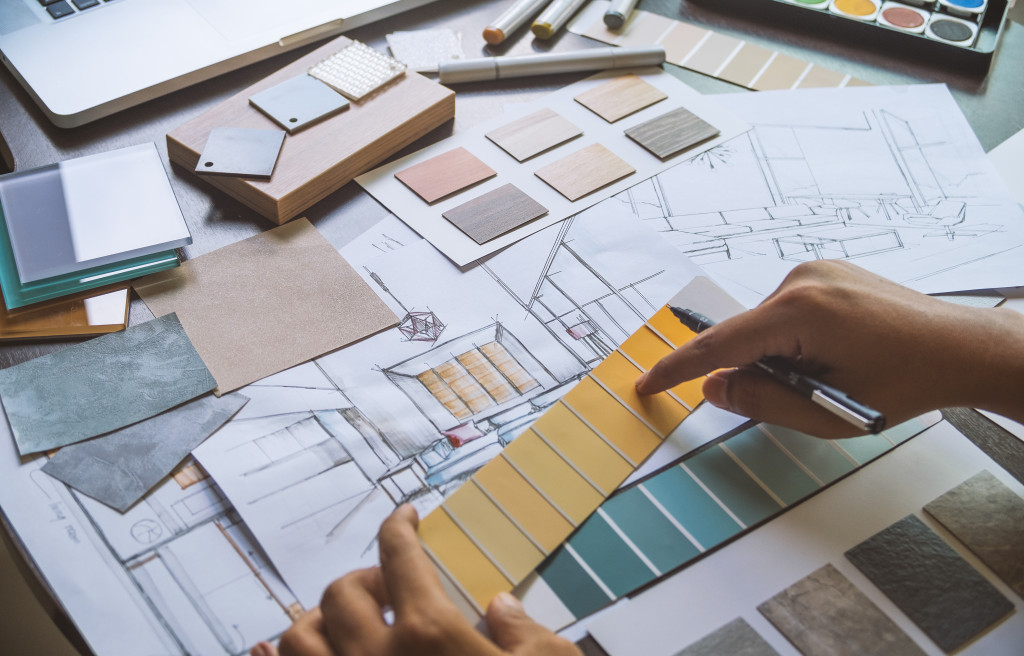Building a home is stressful on all fronts. It’s challenging for homeowners who have to make so many design and safety-related decisions, it takes so much strain on the family because it entails a big transition, and it can drain the household’s funds, too.
But one thing you can save some expenses on is deciding on your home’s interior design. If you have enough confidence in your own taste, and if you can consult with your contractor and architect to ensure that all your design decisions will be compliant with building codes and regulations, then there’s no reason why you can’t design your home yourself. Here are some design and safety tips for going the DIY route in your new home’s interior design.
Find the right suppliers
While your contractor and their team will be primarily in charge of this, it also can’t hurt to ensure that you have the right vendors for every aspect of the project. From the heavy equipment supplier to your furniture, you need to ensure that every team and person you work with has a reputation for being reliable and providing long-lasting and durable products.
Look for inspiration
From architectural magazines to online platforms like Pinterest, there is no shortage of resources that can help you build your taste and sense of style. As long as you have an idea about what kind of look you want to go for, you can come up with the interior design of your dreams—one that is both aesthetically pleasing and functional. Start by drawing up the layout and coming up with swatches and vision boards for your home.
Follow the basic rules of interior design
Here are some basic rules you need to take note of when coming up with a design:
Balance
When designing and styling the interiors of your home, you have to ensure that there is an atmosphere of equilibrium. This is achieved through color, shape, texture, and pattern. Some types of balance you can play with include:
- Formal or symmetrical, which means a room is divided into two sides that perfectly mirror one another. For example, there must be two chairs on both sides of a table.
- Informal or asymmetrical, which is all about subverting expectations and playing with the more formal example above. This means that a room will remain balanced even if no two sides are exact duplicates. An example of this is placing two chairs beside a couch instead of placing them on either side.
- Radial balance is all about finding a focal point and letting it influence the rest of the design decisions.
Rhythm

Rhythm requires that the room have some form of a pattern of repetition that creates a visual whole. Like in music, the rhythm will allow one design element to echo again and again in the space, making it a cohesive unit. This can be achieved by finding a common thread through colors, textures, or shapes.
Harmony
No matter what, your design must send a unified message and theme. While rhythm is all about breaking the monotony, harmony is all about giving the eye a sense of restfulness and calm. One example of this is choosing just one color theme for the space, even if the shapes, textures, and sizes are different.
Scale and proportion
Another important aspect you need to take note of when coming up with a design is proportion, which is all about ensuring that your furniture pieces and other decorative elements are to scale. It’s all about having a proper understanding of how one size of a specific object relates to the space and room in which it is placed. A simple example is placing a large sectional sofa in a small living room.
When designing your space, apply the Golden Section principle, which is known for being present in landscapes and nature, and a ratio that architects and artists are known for using as well.
Emphasis
One of the biggest mistakes you can make in interior design and styling is giving every aspect equal emphasis. It can get boring at best and scattered at worst. Choose a focal point and ensure that your furniture pieces and other decorative elements are arranged around it. Some examples of focal points can be a chandelier, fireplace, screen, or piece of artwork.
The Internet is a treasure trove of information that can provide you with trendy interior design inspirations and looks. Study well and consult with family and friends you know have good taste. This way, only the best ideas can go in your interiors. Happy designing!

